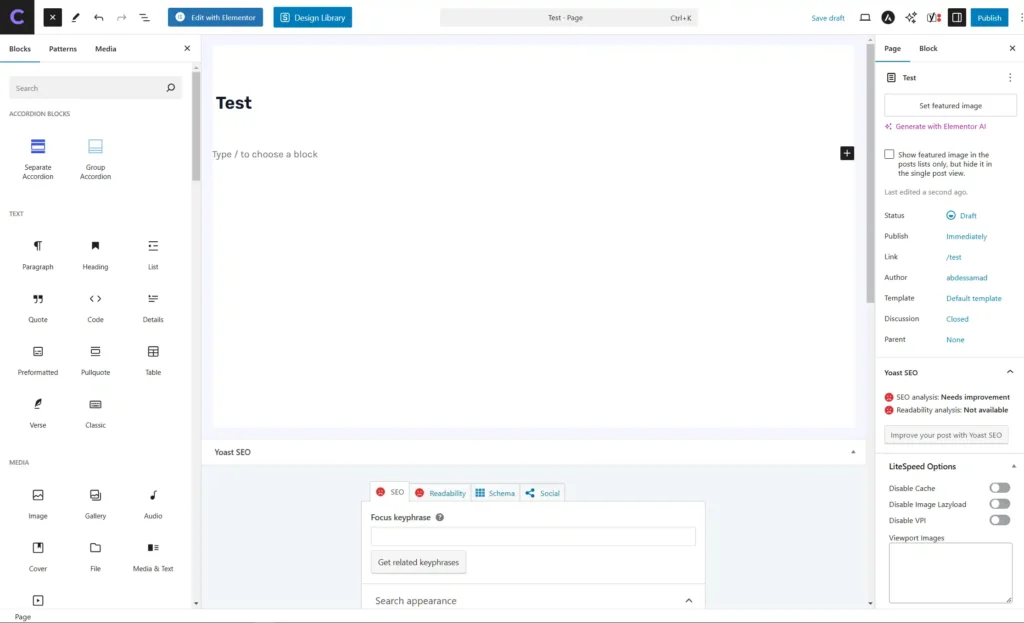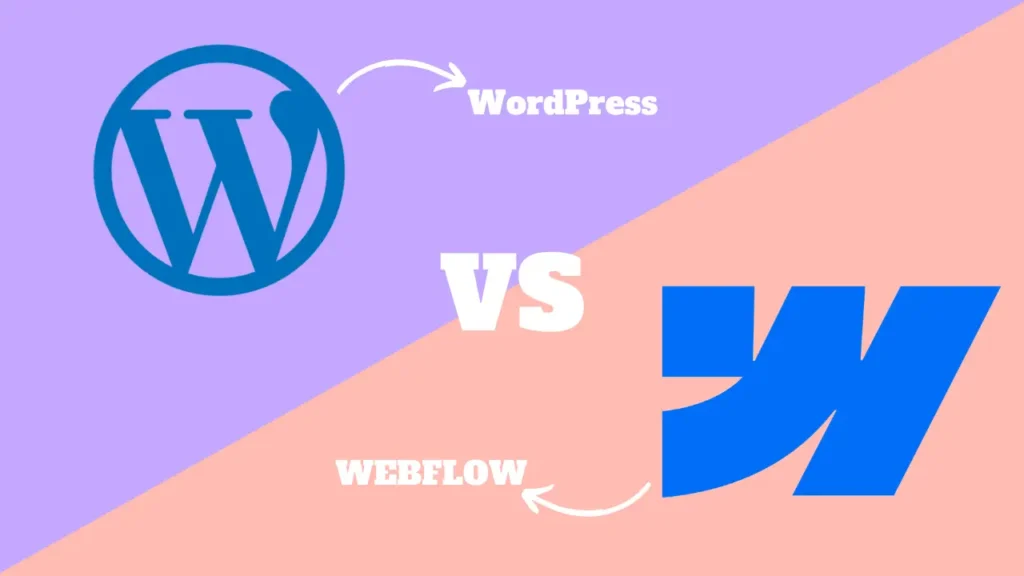Choosing the right website builder can feel overwhelming, especially with so many options available. Among the most popular platforms are Webflow and WordPress, each offering unique benefits that cater to different users. Whether you’re a designer looking for creative control or a business owner seeking a functional site, understanding the strengths and limitations of both platforms is key.
In this article, we’ll provide a detailed comparison of Webflow and WordPress. From ease of use to pricing, design flexibility, and SEO performance, this guide will help you determine which platform aligns best with your needs.
1. Understanding Webflow and WordPress
To make an informed decision, you need a clear understanding of what Webflow and WordPress are and how they operate. Let’s break it down.
What is Webflow?
Webflow is a powerful, browser-based website builder that combines visual design tools with coding-level customization. It is often described as a platform that empowers designers to create custom websites without requiring extensive technical expertise. Webflow allows users to visually manipulate elements while simultaneously generating clean HTML, CSS, and JavaScript code in the background.
- Key Features of Webflow:
- Visual design interface with real-time previews.
- Built-in CMS (Content Management System) for easy content updates.
- Hosting services included, simplifying deployment.
- Advanced animation tools to create dynamic experiences.
- Code export options for developers.
Webflow is particularly suited for designers, freelancers, and agencies who prioritize creative freedom and are comfortable with a slight learning curve.
What is WordPress?
WordPress is an open-source content management system that powers over 40% of the web. Initially launched as a blogging platform, WordPress has evolved into a versatile solution for building everything from personal blogs to eCommerce stores and enterprise-level websites. Unlike Webflow, WordPress offers endless customization through its vast library of themes and plugins.
- Key Features of WordPress
- Open-source platform, free to use.
- Thousands of themes and plugins to extend functionality.
- Flexibility for any type of website: blogs, portfolios, stores, and more.
- Full control over hosting, design, and backend development.
- A large, active community for support and resources.
WordPress is ideal for developers, content creators, and businesses looking for a highly customizable and scalable solution.
2. Ease of Use
Webflow’s User Interface
Webflow’s interface is designed for visual learners. It features a clean dashboard where you can build websites by dragging and dropping elements, adjusting styles, and configuring responsive layouts. This visual-first approach is particularly attractive to designers who want to skip the coding process but still achieve pixel-perfect results.
However, beginners might find Webflow intimidating at first due to its advanced design tools. While it doesn’t require coding knowledge, understanding design principles and how CSS works can be a huge advantage. Thankfully, Webflow University offers a wealth of tutorials and guides to help users master the platform.

- Pros:
- Intuitive drag-and-drop builder.
- Real-time updates and previews.
- Advanced styling options for creative freedom.
- Cons:
- The steeper learning curve for non-designers.
- Limited pre-built widgets compared to WordPress plugins.
WordPress User Experience
WordPress provides a more traditional approach to content management. Its dashboard is straightforward, with options for creating posts, uploading media, and customizing site settings. The introduction of the Gutenberg block editor has modernized the experience, enabling users to design pages with drag-and-drop blocks.
For users who prefer more control over design, WordPress supports popular page builders like Elementor, Divi, and WPBakery. These tools simplify customization without requiring technical skills. However, managing a WordPress site often involves maintaining plugins, updating themes, and ensuring compatibility, which can be challenging for beginners.

- Pros:
- User-friendly dashboard.
- Extensive support for plugins and themes.
- Adaptable to different levels of technical expertise.
- Cons:
- Plugin management can become complex.
- Regular maintenance is required.
3. Design and Customization
Webflow’s Design Flexibility
Webflow is a designer’s paradise. Unlike template-reliant platforms, Webflow offers total creative freedom, allowing you to build websites from scratch or customize existing templates. Its design tools mimic industry-standard graphic design software, enabling precise control over every element.
One standout feature is Webflow’s animation and interaction capabilities. From hover effects to scroll-triggered animations, you can create dynamic experiences that enhance user engagement. Additionally, Webflow generates clean, production-ready code, ensuring your site performs well.
When to Choose Webflow for Design:
- You want a unique, custom design without template limitations.
- You prioritize responsive, mobile-friendly layouts.
- You need advanced animations or micro-interactions.
WordPress Customization Options
WordPress excels in its sheer range of customization options. With over 50,000 plugins and thousands of themes, you can tailor your site to fit any purpose or niche. Whether you’re building a blog, a membership site, or an online store, WordPress has the tools to support your vision.
While customization is extensive, achieving a highly personalized design often requires additional tools like page builders or custom coding. Developers can dive into the source code to modify themes and create unique functionality, but this level of flexibility can be daunting for non-technical users.
When to Choose WordPress for Design:
- You want quick, pre-built solutions with themes.
- You need specialized functionality through plugins.
- You’re comfortable with or can hire developers for advanced customization.
4. Pricing and Costs
Pricing is one of the most important factors when choosing between Webflow and WordPress. While both platforms offer flexibility, their cost structures differ significantly.
Webflow Pricing
Webflow operates on a subscription-based model, offering plans for both individuals and businesses. Here’s a breakdown:

- Free Plan
- Limited features; great for testing the platform.
- Includes Webflow branding and no custom domain support.
- Basic Plan ($14/month)
- Best for simple sites that don’t require CMS functionality.
- Includes a custom domain and 50GB bandwidth.
- CMS Plan ($23/month)
- Ideal for blogs or content-heavy sites.
- Includes CMS items (dynamic content) and SEO features.
- Business Plan ($39/month)
- Suited for larger sites with high traffic.
- Includes increased bandwidth and scalability.
Additional Costs: Custom templates, integrations, and premium assets can increase the overall budget.
WordPress Costs
WordPress itself is free, but you’ll incur costs for hosting, domains, themes, and plugins. Here’s a breakdown:
- Hosting ($5–$30/month):
- Shared hosting (e.g., Bluehost, SiteGround or Hostinger) is affordable but less performant.
- Domain ($10–$20/year):
- Themes (Free–$200):
- Thousands of free themes available.
- Premium themes offer advanced customization and support.
- Plugins (Free–$300+):
- Free plugins cover basic functionality.
- Premium plugins (e.g., Elementor Pro, WooCommerce extensions) can add to the cost.
Long-Term Costs: Maintenance (e.g., updates, backups) and hiring developers for custom features can increase expenses.
5. Features and Functionality
When it comes to features, both platforms shine in different areas.
Webflow Features
Webflow offers an all-in-one solution with built-in tools for design, CMS, hosting, and SEO. You don’t need to rely on third-party plugins, which reduces compatibility issues.
- CMS: Perfect for managing blogs or dynamic content like portfolios.
- Visual Design Tools: Advanced control over animations, grids, and layouts.
- Hosting: Powered by AWS and Fastly, Webflow’s hosting is secure, fast, and scalable.
- SEO Tools: Edit meta tags, create sitemaps, and preview how your site appears in search engines.
WordPress Features
WordPress offers unmatched flexibility with its extensive plugin ecosystem. You can add almost any functionality you can imagine, from SEO to eCommerce.
Key Features:
- Custom Plugins: Extend your site’s functionality with free or premium plugins.
- Themes: Choose from thousands of free and premium themes to customize your site.
- eCommerce with WooCommerce: A powerful plugin for building online stores.
- Scalability: Suitable for everything from small blogs to enterprise-level websites.
6. Performance and SEO
Webflow Performance
Webflow sites are hosted on a global CDN (Content Delivery Network), ensuring fast load times worldwide. With minimal reliance on third-party tools, Webflow-generated sites are optimized for performance right out of the box.
Webflow SEO Features:
- Built-in tools for meta tags, alt text, and structured data.
- Automatically generates clean, semantic HTML code.
- Mobile-first responsive designs improve rankings.
WordPress Performance
WordPress performance depends heavily on your hosting provider and the plugins/themes you use. While you can achieve excellent performance with the right setup, poorly optimized plugins can slow your site.
WordPress SEO Features:
- SEO plugins like Yoast SEO and Rank Math simplify optimization.
- Customizable URLs, metadata, and sitemaps.
- Requires manual effort to ensure fast page speeds (e.g., caching, image optimization).
7. Security and Maintenance
Webflow Security
Webflow handles all security measures, including SSL certificates, server monitoring, and automatic updates. This eliminates the need for manual intervention, making it a great choice for users who prioritize simplicity.
WordPress Security
WordPress sites can be secure but require proactive management. Vulnerabilities often arise from outdated plugins or themes.
Best Practices:
- Install security plugins (e.g., Wordfence, Sucuri).
- Regularly update WordPress, themes, and plugins.
- Use strong passwords and two-factor authentication.
8. Community and Support
Webflow Community
Webflow offers a dedicated community of designers and developers. Resources include:
- Webflow University: Extensive video tutorials and guides.
- Forum: Connect with other users to ask questions and share tips.
- Direct Support: Email-based support for technical issues.
WordPress Community
WordPress has one of the largest open-source communities. You’ll find:
- Forums: Ask questions and get help from developers.
- Tutorials: Thousands of articles, videos, and courses.
- Third-Party Support: Many hosting providers and developers offer WordPress-specific support.
9. Use Cases: When to Choose Webflow or WordPress
Webflow is Ideal For…
- Designers: Those who prioritize creative freedom and sleek designs.
- Small Businesses: Companies needing a fast, secure, all-in-one solution.
- Portfolios: Perfect for photographers, artists, and agencies.
WordPress is Ideal For…
- Bloggers: Great for content-heavy sites with frequent updates.
- eCommerce Stores: Highly customizable with WooCommerce.
- Developers: Those who need full control over the backend.
10. Making the Right Choice for Your Website
Choosing between Webflow and WordPress depends on your needs:
- If you’re a designer or need an all-in-one solution, go with Webflow.
- If you want flexibility, scalability, and affordability, choose WordPress.
Test both platforms before committing, and consider your long-term goals when making your decision.
FAQs
Webflow is easier for beginners who value visual design, while WordPress is better for those who want flexibility and don’t mind a steeper learning curve.
Yes, but migration isn’t seamless. Webflow allows code export, but dynamic content must be manually recreated in WordPress.
Both platforms are excellent for SEO. Webflow has built-in tools, while WordPress relies on plugins like Yoast SEO.
WordPress, with WooCommerce, is better for complex eCommerce stores. Webflow works well for simpler online shops.
Webflow: Premium templates and integrations.
WordPress: Hosting, premium plugins, and developer fees for advanced customization.
